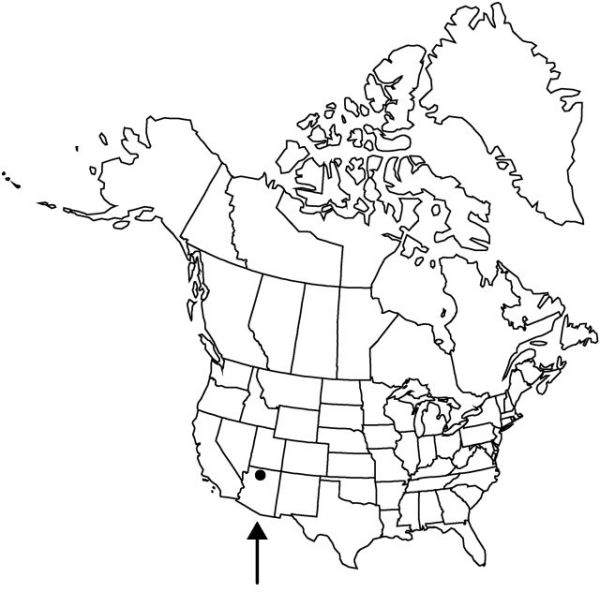Agave phillipsiana
Novon 11: 410, fig. 1. 2001.
Plants acaulescent, freely suckering; rosettes solitary to cespitose, 7.5–10 × 7.5–10 dm, open. Leaves erect, 76–78 × 10–11 cm; blade glaucous-green to dark green, lightly cross-zoned, lanceolate, rigid, adaxially concave toward apex, abaxially convex at base; margins straight or undulate, armed, teeth single, well defined, brittle, 4–7 mm, 1–2.5 cm apart, interstitial teeth (2–)3–7, mostly along distal 2/3 of margins; apex not conspicuously incurved, spine brownish gray, slender, 2.5–4 cm. Scape 2.7–5.5 m. Inflorescences narrowly paniculate, not bulbiferous, open; bracts persistent, triangular, 1–2+ cm; lateral branches 9–16, ascending to nearly perpendicular, comprising distal 1/3–1/2 of inflorescence, longer than 10 cm. Flowers 32–45 per cluster, erect, 7.4–8.6 cm; perianth greenish cream, tube campanulate, 15.5–20 × 15–23 mm, limb lobes persistent and often leathery during and after anthesis, spreading, unequal, 15–22 mm, apex often flushed with maroon; stamens long-exserted; filaments inserted subequally below rim of perianth tube, erect, yellow, 4.8–6.4 cm, apex flushed with maroon; anthers yellow, 17–25 mm; ovary 3.3–4.6 cm, neck slightly constricted, 4–8 mm. Capsules not seen. Seeds unknown. 2n = ca. 120.
Phenology: Flowering early summer.
Habitat: Sandy to gravelly places with desert scrub
Elevation: 700–1100 m
Distribution

Ariz.
Discussion
Agave phillipsiana is known from only four sites within Grand Canyon National Park. All are found on terraces along permanent waterways. Three of the sites are near pre-Columbian agricultural features or habitation sites. Two sites occur near a Kayenta-Anasazi Pueblo cliff dwelling (a.d. 1000–1150), on a terrace presumably once farmed by the early inhabitants. Agave phillipsiana possesses traits that would be advantageous to those harvesting it for food, since it is a plant that freely offsets and has open rosettes with large, long leaves that are easily cut. The species is possibly an ancient cultivar selected by pre-Columbian people from populations related to A. palmeri, A. colorata Gentry, or other closely related taxa.
Selected References
None.